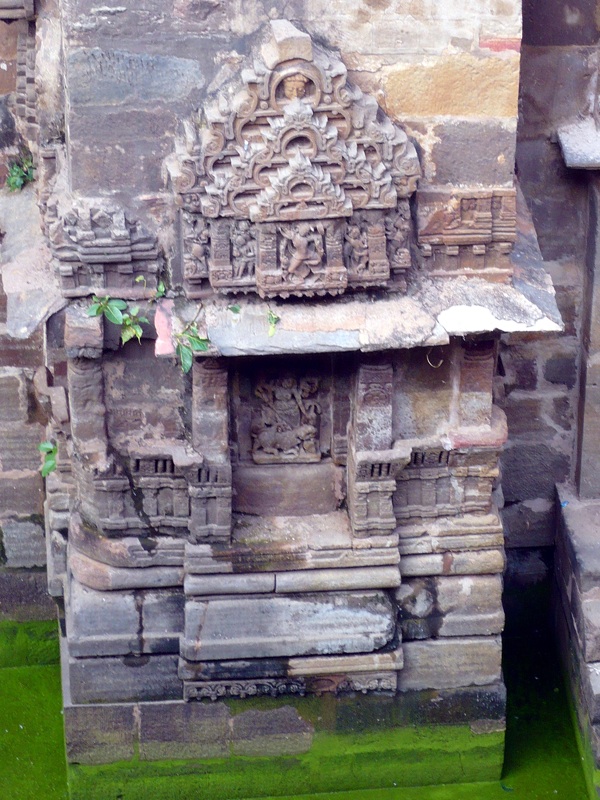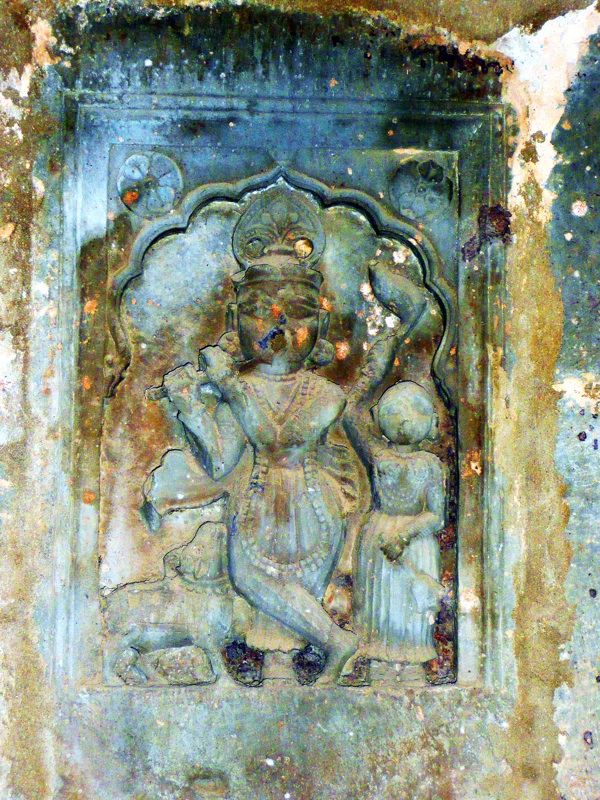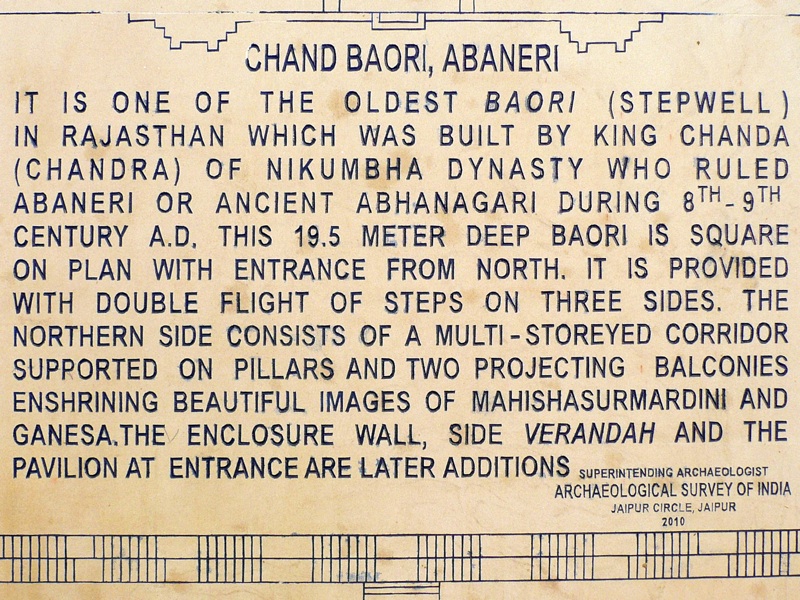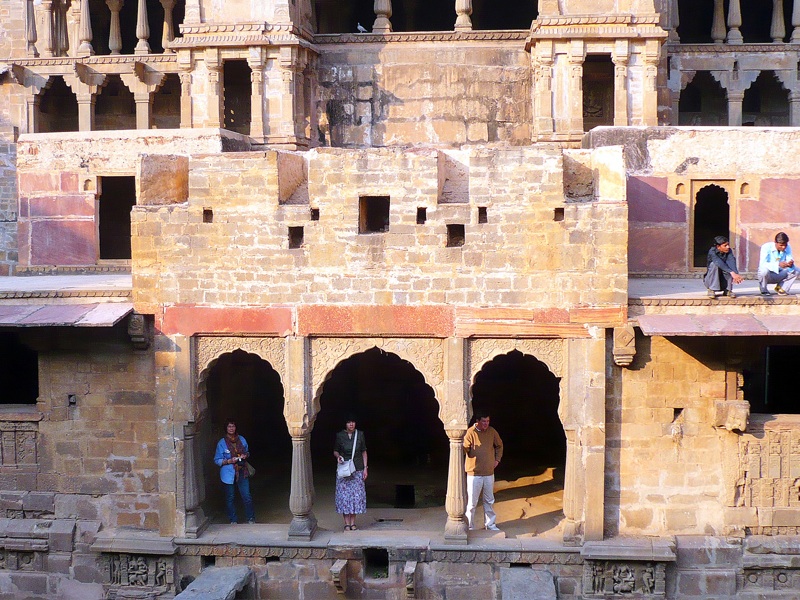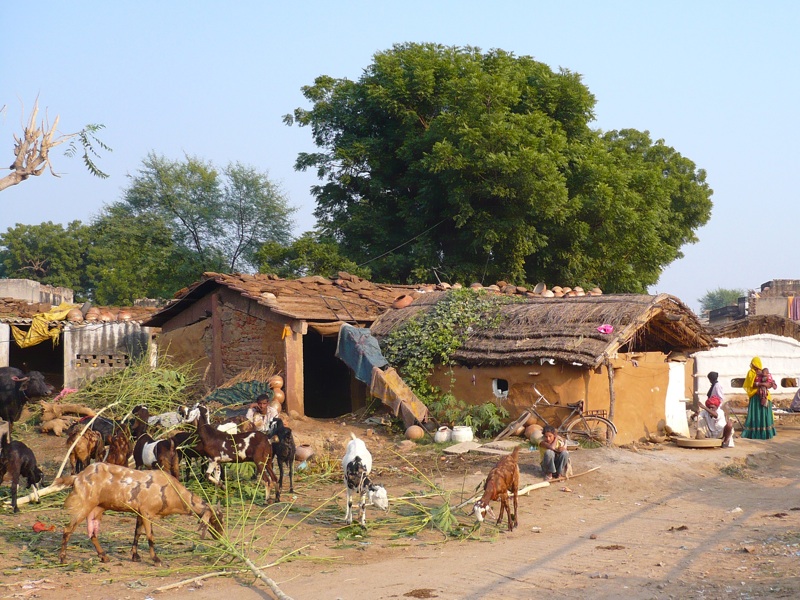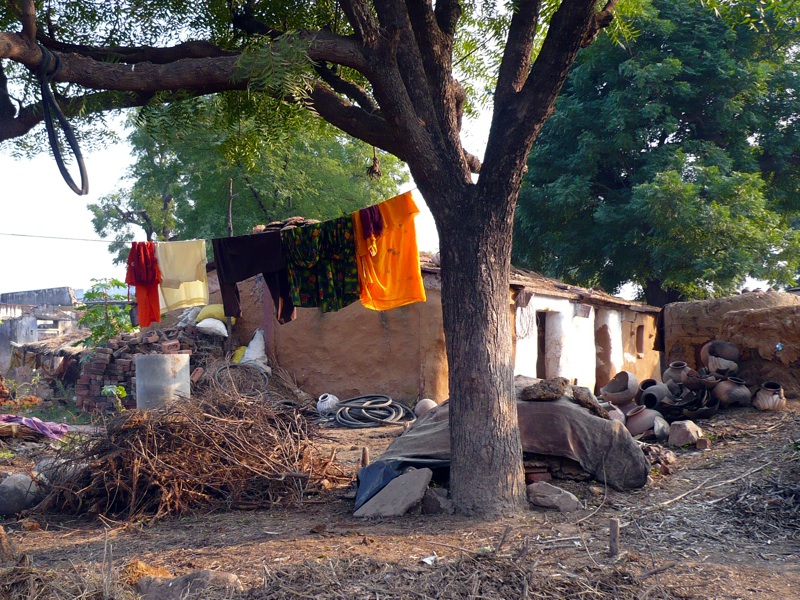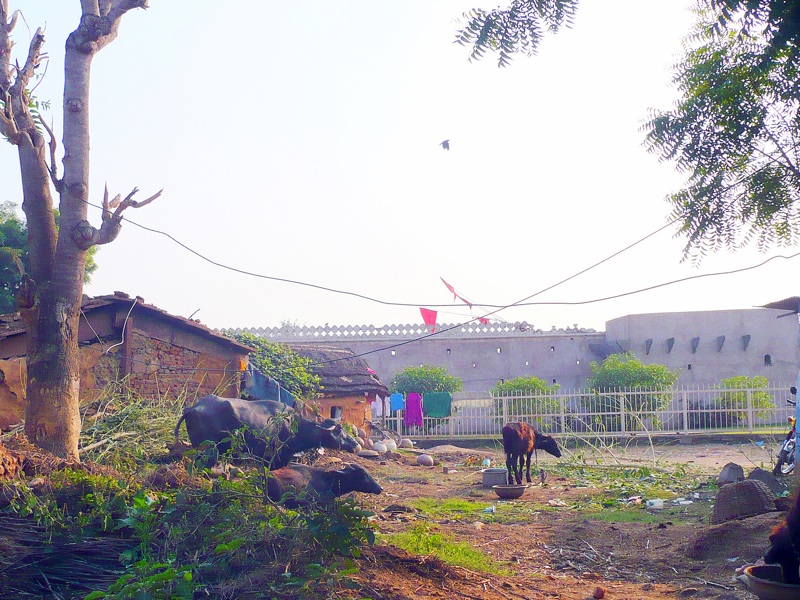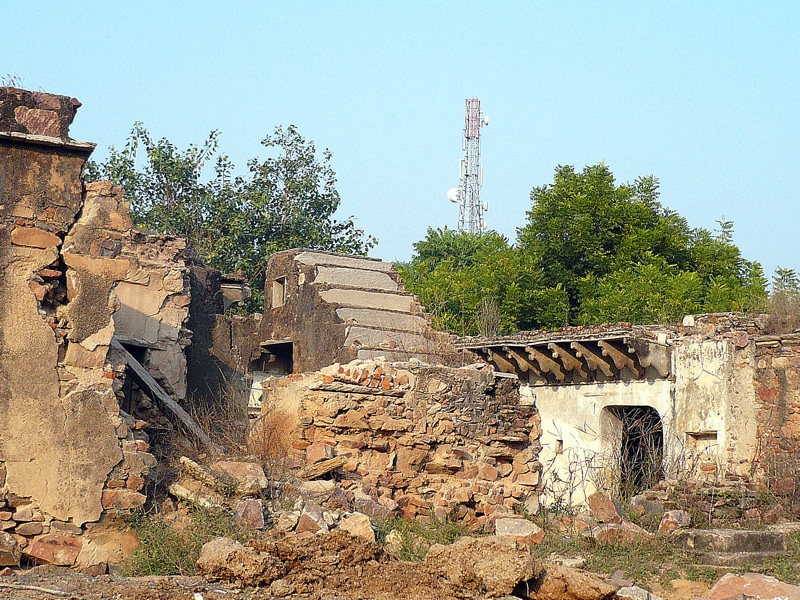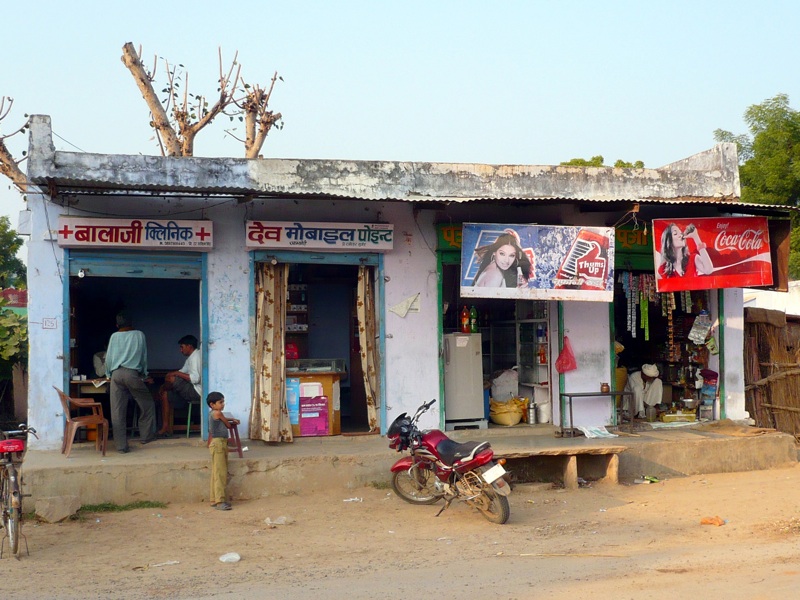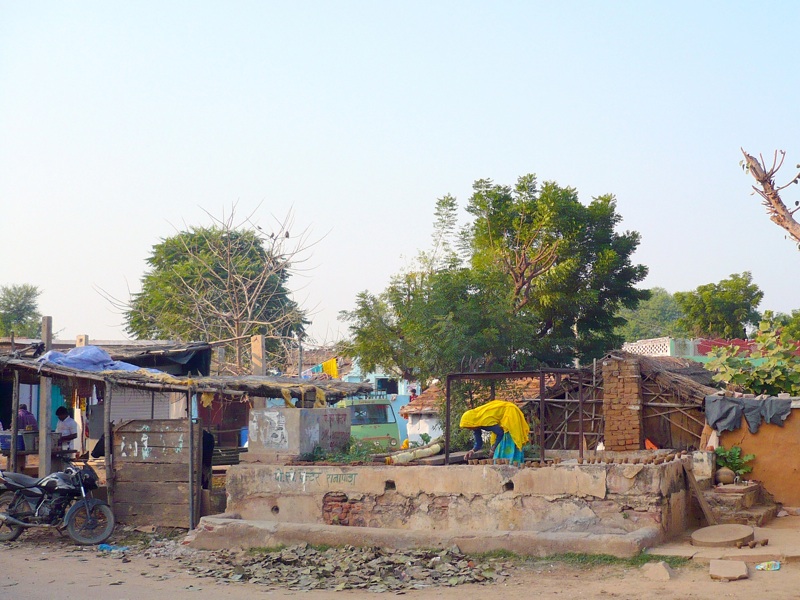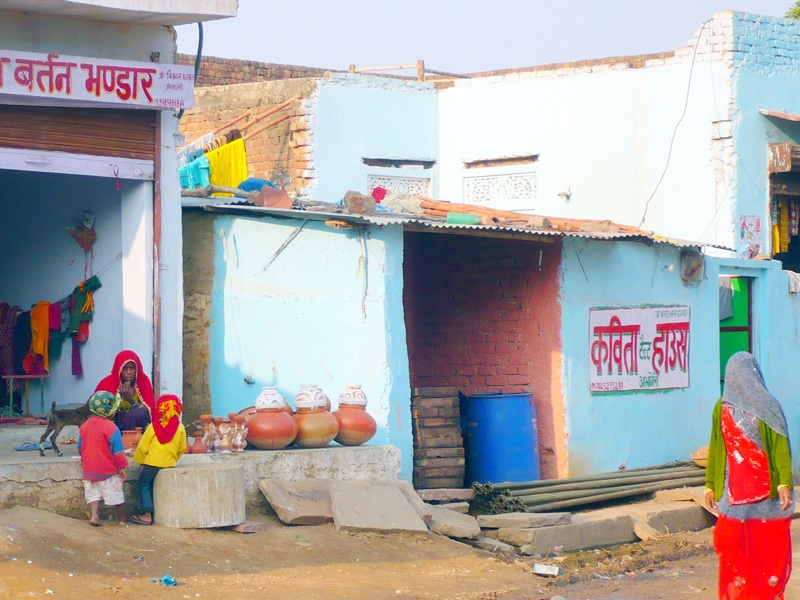Galeria zdjęć
 to Agra
to Agra  , 95 km east of Jaipur (➤ map)(➤ map). Visited by tourists who want to see Chand Baori - one of the deepest and largest so-called stepwells in India.
, 95 km east of Jaipur (➤ map)(➤ map). Visited by tourists who want to see Chand Baori - one of the deepest and largest so-called stepwells in India.It is believed that the village (originally called Abha Nagri - "City of Light") was founded in the 9th century by King Chand of one of the Rajput clans who ruled the region in the 8th and 9th centuries. Also in the 9th century, the famous step well, Chand Baori, was built. It is today the main attraction attracting tourists to Abhaneri.
Steppwells are an Indian invention, the most widespread in the west of the country, where several thousand of them were built. Their primary purpose was to collect water - important in view of the problem of seasonal fluctuations in its availability. On the one hand, it was about collecting rainwater, on the other - reaching the groundwater: for this purpose, deep pits were dug, which were then covered with mortarless rock blocks, creating stairs leading down to the water table.
Chand Baori in Abhaneri, today functioning as a monument and tourist attraction, but until recently serving as a utility, is one of the deepest and largest step wells in India (according to some sources, the deepest in the world) and one of the first steppwells in Rajasthan. It is built on a square plan with a side of 35 m; its depth is 19.5 m. Three walls - south, east and west are covered with narrow steps (altogether 3500) arranged in a cascading pattern of perfect symmetry, on 13 levels. The entrance is located in the north wall, which houses multi-story corridors, pavilions and two protruding balconies supported by pillar; in the lower part there are two niches with beautiful reliefs.
Adjoining the Chand Baori is the 10th century Harshat Mata Temple (dedicated to the goddess of joy and happiness). There used to be a royal residence and a theater stage in Chand Baori; today, however, only ruins remain of these buildings.


